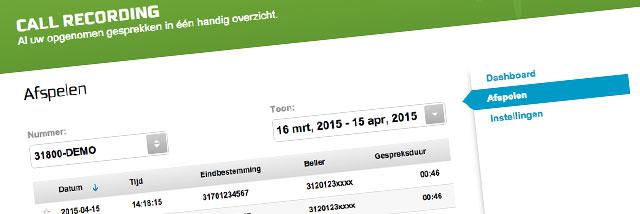Boost your virtual call center with the Belfabriek CRM integration

In today’s fast-paced and digitized world, more and more companies are switching to a cloud-based telephony platform for organizing their call centers. Virtual call centers offer numerous advantages compared to traditional telephony, including lower costs, greater flexibility, and easier scalability. Digital telephony is also constantly evolving and comes with numerous smart and automated features to better serve your customers.
CRM programs (Customer Relation Management), on the other hand, have long been the standard for companies with call centers, both large and small. They are crucial in managing customer relationships and improving staff efficiency. But imagine combining the best of both worlds and the benefits it would bring.
Discover AIS (automation, integration, software): the indispensable link between your CRM program and your virtual call center.
What is CRM integration for virtual call centers?
By integrating the virtual call center application with your CRM system, you ensure that the functionalities of your digital telephony are immediately usable from within that CRM program. This means that, based on caller ID, there is a real-time connection with the customer database. All relevant data is then immediately available for both incoming and outgoing calls. Calling directly from your CRM is also possible.
Employees no longer need to switch between different programs to assist customers; they have all the information on one screen. And that screen is their familiar CRM program.
Why integrate digital telephony into CRM?
When your CRM program is linked to your cloud telephony via a VoIP integration, customer service improves in two ways:
First, employees have easier access to customer data, spend less time searching for information, and can thus provide higher-quality service.
Second, digital phone systems come with numerous features such as interactive voice response (IVR), which automatically routes calls to the right employee, and offer customers the convenience of menu options and smart queues.
The combination of CRM and a cloud-based telephony platform ensures that you can offer an outstanding customer experience, which in turn leads to a better (online) reputation and more sales.
Benefits of CRM integration for business telephony
Still not convinced of the necessity to link your digital telephony platform to your CRM tool? Here are five benefits that will undoubtedly win you over. In fact, a digital telephony integration for your CRM is nowadays indispensable if you want to outpace the fierce competition.
1. Increased efficiency and productivity
The main goal of linking your CRM to your digital telephony system is to improve efficiency. Merging your communication channels and CRM program means employees no longer need to switch between apps to make customer calls.
Outgoing calls no longer need to be manually dialed but can be made directly from the CRM program with a click-to-call link. Current or potential customers can be called automatically, eliminating the chance of dialing the wrong number.
Your entire organization actually benefits from the improved efficiency. This is mainly thanks to the general advantages of cloud telephony, which can automate numerous tasks. Think of the calling itself, automatic call forwarding, menu options, and smart queues. Research shows that call handling time via a CRM integration decreases by 20 percent!
2. Better customer management
By linking your call center software to your CRM, you can manage customer contacts more effectively. The data in your CRM is visible in real-time in your digital telephony app. This allows you to immediately see which customer is on the line, what they have said, and what actions still need to be taken.
Thanks to these valuable statistics, you gain better insight into your employees’ performance. This includes statistics such as the number of calls per day, average call duration, and average wait time. Based on this, you can make adjustments and improve your team’s overall productivity.
3. Improved communication and team performance
Selling, whether products or services, is still the core business of most companies. When your sales team has access to accurate customer data, they can make informed decisions about which products or services to offer to which customers and how best to reach them.
By exchanging data between both platforms (digital telephony app and CRM), employees see all relevant information at a glance. Your dedicated salespeople have instant access to contact details, customer history, and notes on previous interactions. Needless to say, this leads to a better customer experience and more sales.
The possibilities are truly endless. Based on interactions with your company, automated messages can also be sent. For example, when a customer has viewed a specific product on your website, you can automatically send them a text or app message with a discount code.
4. Insightful analysis of calls and customer data
The data your CRM program collects about your customers is a true goldmine for your marketing. You can analyze customer behavior, create customer profiles, and develop marketing strategies. These insights help turn potential customers into actual customers.
Moreover, you simultaneously gain a lot of useful information from the statistics of your virtual call center. All information – call duration, timing, productivity, and more – is available in real-time. This gives you a better understanding of your customer service in general and what improvements are needed.
For instance, if there are many incoming calls about a specific topic, you might consider dedicating a new section in your FAQ to that subject.

 Netherlands
Netherlands Belgium
Belgium Denmark
Denmark Germany
Germany France
France Switzerland
Switzerland Austria
Austria UK
UK Spain
Spain Italy
Italy


